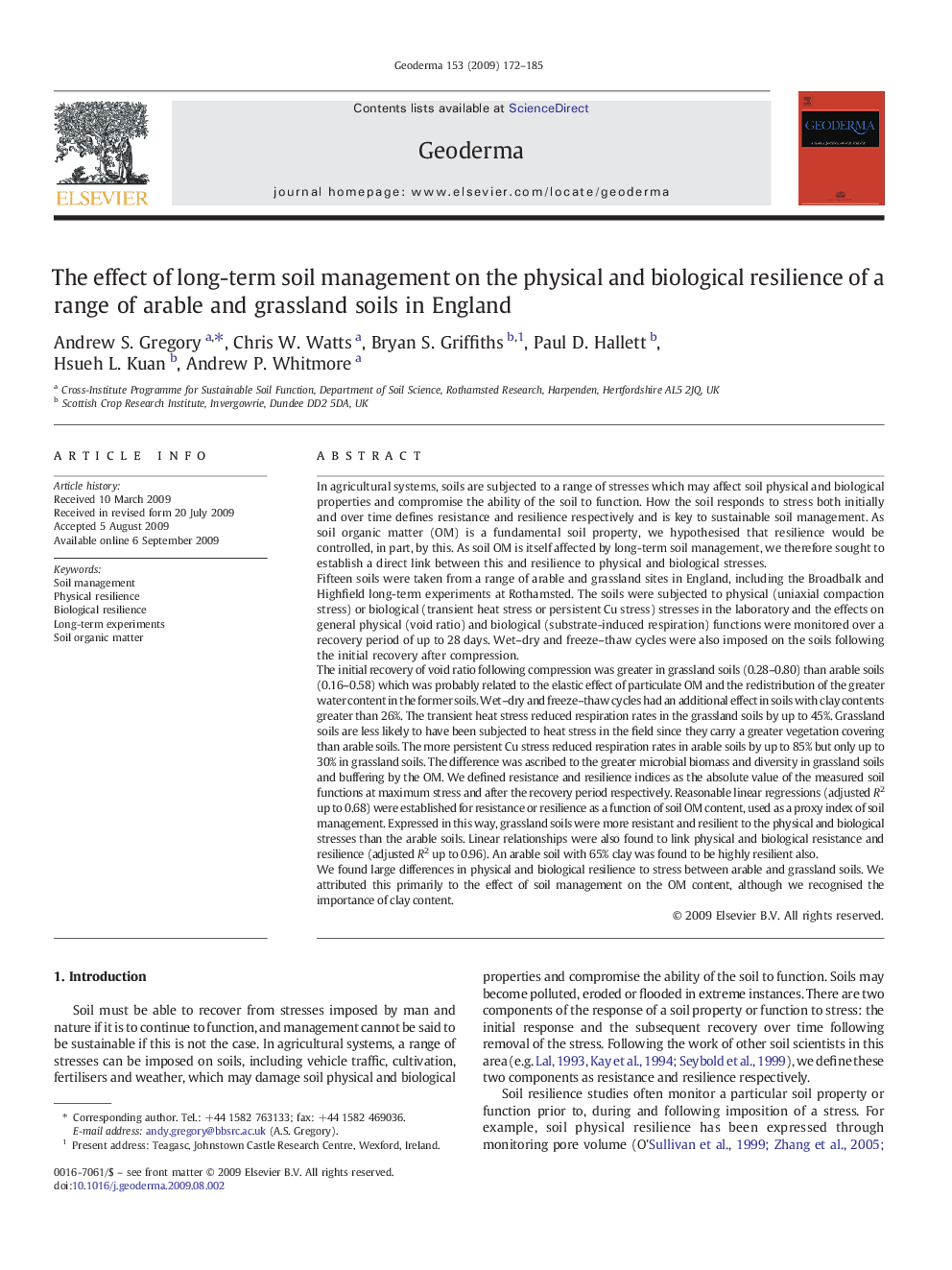| کد مقاله | کد نشریه | سال انتشار | مقاله انگلیسی | نسخه تمام متن |
|---|---|---|---|---|
| 4574302 | 1629528 | 2009 | 14 صفحه PDF | دانلود رایگان |

In agricultural systems, soils are subjected to a range of stresses which may affect soil physical and biological properties and compromise the ability of the soil to function. How the soil responds to stress both initially and over time defines resistance and resilience respectively and is key to sustainable soil management. As soil organic matter (OM) is a fundamental soil property, we hypothesised that resilience would be controlled, in part, by this. As soil OM is itself affected by long-term soil management, we therefore sought to establish a direct link between this and resilience to physical and biological stresses.Fifteen soils were taken from a range of arable and grassland sites in England, including the Broadbalk and Highfield long-term experiments at Rothamsted. The soils were subjected to physical (uniaxial compaction stress) or biological (transient heat stress or persistent Cu stress) stresses in the laboratory and the effects on general physical (void ratio) and biological (substrate-induced respiration) functions were monitored over a recovery period of up to 28 days. Wet–dry and freeze–thaw cycles were also imposed on the soils following the initial recovery after compression.The initial recovery of void ratio following compression was greater in grassland soils (0.28–0.80) than arable soils (0.16–0.58) which was probably related to the elastic effect of particulate OM and the redistribution of the greater water content in the former soils. Wet–dry and freeze–thaw cycles had an additional effect in soils with clay contents greater than 26%. The transient heat stress reduced respiration rates in the grassland soils by up to 45%. Grassland soils are less likely to have been subjected to heat stress in the field since they carry a greater vegetation covering than arable soils. The more persistent Cu stress reduced respiration rates in arable soils by up to 85% but only up to 30% in grassland soils. The difference was ascribed to the greater microbial biomass and diversity in grassland soils and buffering by the OM. We defined resistance and resilience indices as the absolute value of the measured soil functions at maximum stress and after the recovery period respectively. Reasonable linear regressions (adjusted R2 up to 0.68) were established for resistance or resilience as a function of soil OM content, used as a proxy index of soil management. Expressed in this way, grassland soils were more resistant and resilient to the physical and biological stresses than the arable soils. Linear relationships were also found to link physical and biological resistance and resilience (adjusted R2 up to 0.96). An arable soil with 65% clay was found to be highly resilient also.We found large differences in physical and biological resilience to stress between arable and grassland soils. We attributed this primarily to the effect of soil management on the OM content, although we recognised the importance of clay content.
Journal: Geoderma - Volume 153, Issues 1–2, 15 October 2009, Pages 172–185